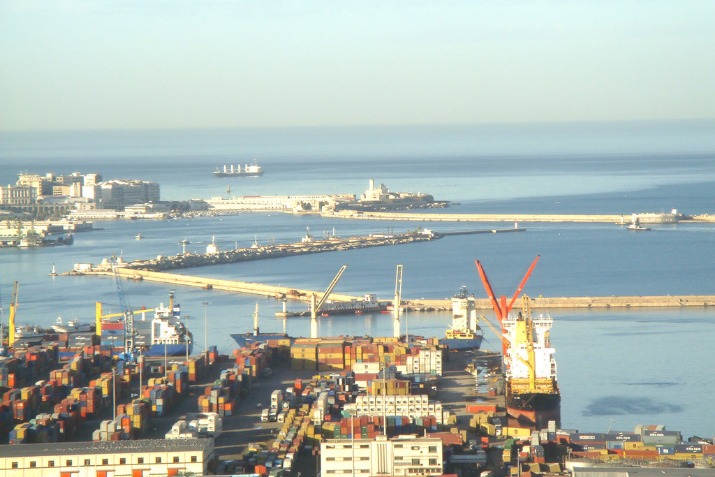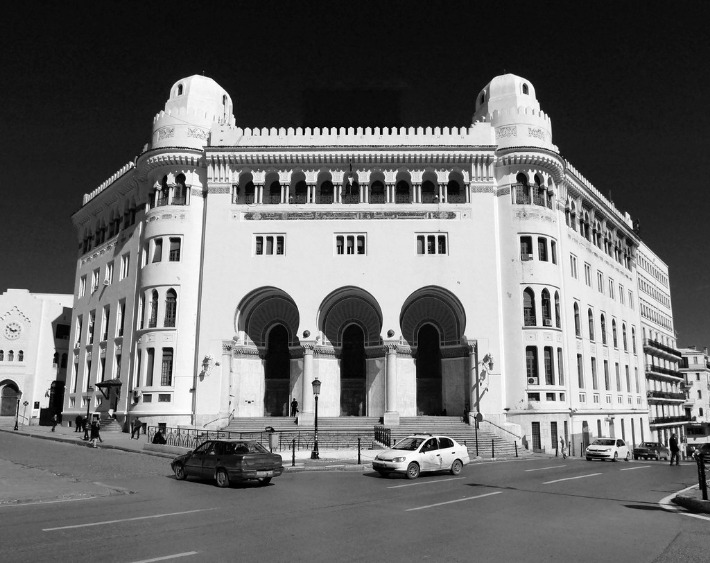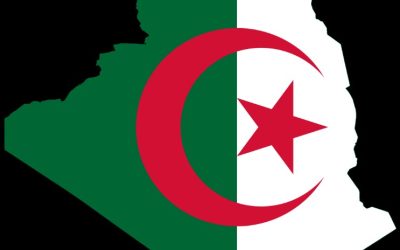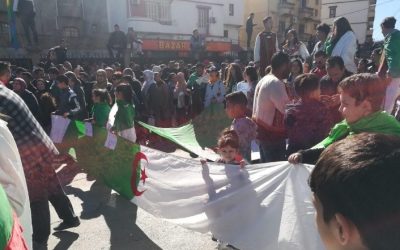Algiers: The Capital City
Algiers, the vibrant capital of Algeria, is a city rich in history, culture, and architectural beauty. Situated along the Mediterranean coast, it serves as the political, economic, and cultural center of the country. With its blend of traditional and modern elements, Algiers offers a fascinating glimpse into Algeria’s diverse heritage and dynamic urban life.
Historical Background of Algiers
Algiers, the capital city of Algeria, is a vibrant and historically rich metropolis situated along the Mediterranean coast. Known for its white Ottoman palaces, grand avenues, and scenic harbor, Algiers serves as the political, cultural, and economic center of the country. Its distinctive blend of modern architecture and historic sites reflects its diverse heritage and evolving identity.
The historical background of Algiers dates back to ancient Phoenician times when it was established as a trading post. Throughout the centuries, it has been influenced by various civilizations, including the Romans, Byzantines, Arabs, Ottoman Turks, and French colonizers. The city grew significantly during the Ottoman Empire when it became a vital administrative and commercial hub. In 1830, France colonized Algiers, transforming it into a colonial city and exerting control over much of Algeria. The struggle for independence, which culminated in 1962, was a pivotal chapter in the city’s history, leading to its emergence as the capital of independent Algeria. Today, Algiers continues to honor its diverse past while embracing development and modernization, making it a city of historical significance and cultural vitality.
Architectural Landmarks in Algiers
Algiers, the capital city of Algeria, is a vibrant metropolis renowned for its rich history, diverse culture, and striking architecture. Situated along the Mediterranean coast, it serves as the political, economic, and cultural hub of the country. The city seamlessly blends its historic Ottoman, French colonial, and modern influences, creating a unique and picturesque urban landscape.
Among its architectural landmarks, the Kasbah of Algiers stands out as a UNESCO World Heritage site, showcasing narrow winding streets and historic buildings that reflect the city’s ancient past. The impressive Ketchaoua Mosque, with its blend of Ottoman and Moorish styles, is another iconic structure. The grand Basilica of Notre Dame d’Afrique offers panoramic views of the city and embodies a blend of architectural influences. Additionally, the Martyrs’ Memorial is a modern symbol of Algerian independence and national pride, while the new modernist buildings and government structures illustrate the city’s ongoing development and modernization. Together, these landmarks highlight Algiers’ architectural diversity and cultural significance.
Culture and Festivals in Algiers
Algiers, the capital city of Algeria, is a vibrant metropolis renowned for its rich history, diverse culture, and stunning architecture. Situated along the Mediterranean coastline, it serves as the political, economic, and cultural hub of the country, blending ancient traditions with modern development. The city’s picturesque streets are lined with Ottoman-era buildings, French colonial architecture, and contemporary structures, reflecting its layered history.
Algiers boasts a vibrant cultural scene that includes music, dance, art, and cuisine. The city is famous for its oud music and traditional raï, which attract visitors from around the world. Museums such as the Museum of Modern Art and the Bardo Museum showcase Algeria’s artistic and historical treasures, offering insight into its rich heritage. The bustling Kasbah, a UNESCO World Heritage site, offers a glimpse into the city’s historic past with its narrow winding streets and centuries-old mosques.
Throughout the year, Algiers hosts numerous festivals celebrating its diverse culture. The International Festival of Algiers features performances by artists from around the globe, showcasing music, dance, and theater. The Rose Festival in nearby areas highlights the region’s agricultural specialties, while religious celebrations like Eid are marked with vibrant ceremonies and communal gatherings. These festivals contribute to the lively spirit of the city, making Algiers a dynamic destination for visitors seeking cultural richness and historical depth.
Economy and Key Industries
Algiers, the capital city of Algeria, is a vibrant and historically significant metropolis situated along the Mediterranean coast. Known for its stunning Ottoman and French colonial architecture, it serves as the political, cultural, and economic hub of the country. The city features a mix of modern high-rises and historic sites, reflecting its diverse heritage and rapid growth.
The economy of Algiers is a key driver of Algeria’s national prosperity, with a strong focus on the oil and gas sectors. As one of the largest producers of hydrocarbons in Africa, energy exports form the backbone of its economy, providing revenue necessary for development and infrastructure projects. Besides energy, the city also has growing industries in construction, manufacturing, and services, all contributing to its dynamic economic landscape.
Key industries in Algiers include:
- Oil and natural gas production
- Petrochemical manufacturing
- Construction and real estate development
- Transport and logistics services
- Tourism and hospitality, driven by its historical sites and Mediterranean coastline
Oran: The Coastal City
Oran is a vibrant coastal city in Algeria, renowned for its rich history, diverse culture, and lively atmosphere. Nestled along the Mediterranean Sea, it serves as a major economic and cultural hub in the country. With its blend of old-world charm and modern development, Oran attracts visitors and residents alike who are eager to explore its unique attractions and lively street life.
History and Significance of Oran
Oran is a vibrant coastal city in Algeria, renowned for its rich history and cultural significance. Situated along the Mediterranean Sea, it has served as a major port and commercial hub for centuries, shaping its diverse influence and dynamic identity. The city has a blend of Moorish, Spanish, and French architectural styles, reflecting its historical interactions with various civilizations.
Historically, Oran has been a strategic location due to its port facilities, playing a key role in trade, military, and regional commerce. It dates back to ancient times, with evidence of Phoenician and Roman settlements, and later became a prominent city under Islamic rule. During the Spanish occupation in the 15th and 16th centuries, Oran grew as a fortified city, and later, as part of French Algeria, it experienced urban expansion and modernization.
Today, Oran is considered one of Algeria’s most important economic centers, known for its port, industry, and cultural scene. It hosts various festivals, music events, and traditions that highlight its diverse heritage. The city’s historical sites, mosques, and colonial architecture attract tourists and history enthusiasts alike, emphasizing its ongoing importance as a symbol of Algeria’s coastal legacy and multicultural history.
Popular Tourist Attractions

Oran is a vibrant coastal city in Algeria known for its rich history, lively culture, and stunning Mediterranean scenery. As one of Algeria’s major urban centers, it offers a blend of modernity and tradition that attracts numerous visitors each year.
Popular tourist attractions in Oran include the historic Santa Cruz Fortress, which offers panoramic views of the city and the sea. The bustling Place du 1er Novembre is a central hub filled with cafes, shops, and lively street performances. The Mohamed Boudiaf Modern Art Museum showcases Algeria’s artistic heritage, while the Cathedral of Sacré-Cœur reflects the city’s colonial past. Visitors can also enjoy relaxing walks along the scenic beaches or explore the vibrant markets like the Souk El Houma for local crafts and traditional foods.
Local Cuisine and Culinary Traditions
Oran, a vibrant coastal city in Algeria, is renowned for its rich history, lively culture, and picturesque Mediterranean setting. Situated along the Atlantic Ocean, it serves as an important economic and cultural hub, blending historical influences with modern developments.
The city’s cuisine reflects a diverse mixture of Arab, Berber, and French culinary traditions, offering a tantalizing array of flavors. Seafood is a staple, with dishes like grilled fish, calamari, and shrimp often featured in local meals, showcasing the city’s maritime heritage. Additionally, Oran is famous for its spicy and aromatic dishes, such as “Makroudh” (sweet pastry) and “Rechta” (handmade noodles served with a flavorful broth).
In terms of culinary traditions, street food plays a significant role in daily life, with vendors offering freshly baked “Kesra” (flatbread), “Samoussas,” and other savory snacks. The city’s vibrant markets, like Souk El Had, are bustling with activity, providing fresh produce, spices, and local delicacies that highlight the region’s culinary diversity. The blend of traditional recipes and contemporary influences makes Oran an exciting destination for food lovers eager to explore authentic Algerian flavors by the sea.
Nightlife and Entertainment Scene
Oran, a vibrant coastal city in Algeria, is renowned for its lively nightlife and bustling entertainment scene. The city offers a perfect blend of cultural heritage and modern entertainment, attracting both locals and visitors looking for an energetic atmosphere after sunset.
- Nightclubs and Bars: Oran boasts numerous nightclubs and bars where music genres range from traditional Raï to contemporary international hits, creating an exciting nightlife experience.
- Live Music Venues: The city hosts various venues that feature live performances by local artists, providing a platform for cultural expression and entertainment.
- Restaurants and Cafés: In the evenings, the city’s many restaurants and cafés serve delicious Algerian cuisine alongside entertainment, offering a social space for both relaxation and enjoyment.
- Festivals and Events: Throughout the year, Oran hosts festivals, concerts, and cultural events that celebrate Algerian music, dance, and heritage, contributing to its vibrant entertainment landscape.
- Historical Night Tours: Some tour operators offer night tours of historic sites such as the Santa Cruz Fortress, allowing visitors to experience the city’s historical beauty under the stars.
Constantine: The City of Bridges
Constantine, known as the City of Bridges, is a historic and vibrant city located in northeastern Algeria. Renowned for its dramatic cliffs, impressive bridges, and rich cultural heritage, Constantine has long been a symbol of resilience and beauty in the region. The city’s unique landscape and ancient architecture make it a fascinating destination for travelers and history enthusiasts alike.
Geography and City Layout
Constantine, often called the “City of Bridges,” is a historic city located in northeastern Algeria. Known for its dramatic landscape, the city is perched atop a series of steep hills and deep gorges that contribute to its unique geographic character. Its rivers and valleys have shaped both its natural environment and urban development, making it a striking example of a city adapted to a rugged terrain.
The geographical setting of Constantine plays a significant role in its layout. The city is divided by the Rhumel River, which cuts through the limestone hills, creating deep valleys and rocky formations. Numerous bridges connect the different parts of the city, with over 10 notable bridges spanning the Rhumel, earning Constantine its nickname. The terrain’s uneven nature has led to a haphazard yet charming city planning, with winding streets and staircases that facilitate movement between various districts.
- The city is built on a series of limestone plateaus and hills, with heights reaching up to 200 meters above sea level.
- Multiple rivers and gorges define the landscape, necessitating the construction of numerous bridges and tunnels.
- Constantine’s layout reflects its natural topography, with neighborhoods often clustered on the high ground or along steep slopes.
- The city center is situated on the largest plateau, serving as the administrative and commercial hub.
- Transportation infrastructure is heavily influenced by the geographic challenges, with cable cars and bridges playing vital roles.
This unique geography and layout not only give Constantine its distinctive aesthetic but also influence its urban dynamics and cultural identity, making it one of Algeria’s most remarkable cities.
Historical Sites and Monuments
Constantine, often called the “City of Bridges,” is a captivating city in Algeria known for its dramatic landscape and rich history. Situated atop rugged gorges and cliffs, it is connected by a series of historic and modern bridges that showcase engineering marvels and provide breathtaking views of the surrounding terrain.
The city boasts numerous historical sites and monuments that reflect its diverse cultural heritage. Among the most notable is the ancient Amphitheatre of Constantine, a testament to Roman grandeur, which once hosted gladiatorial contests and public gatherings. The Casbah of Constantine, a UNESCO World Heritage site, features narrow winding streets, old mosques, and traditional houses, offering a glimpse into the city’s medieval past.
Other prominent landmarks include the Palace of Ahmed Bey and the Mohamed Boudiaf Mausoleum, commemorating important figures in Algeria’s history. The city is also home to several museums, such as the Museum of Cirta, which displays artifacts from ancient Numidian, Roman, and Islamic periods.
Combined, the city’s bridges, archaeological sites, and monuments create a remarkable tapestry that narrates Constantine’s storied past and vibrant present, making it a must-visit destination for history enthusiasts and travelers alike.
Cultural Institutions and Museums
Constantine, known as the City of Bridges, is a captivating city in Algeria that showcases a unique blend of history, culture, and architecture. The city is renowned for its dramatic dramatic landscapes, where deep gorges and cliffs are connected by numerous historic bridges, earning it the nickname. Constantine boasts a rich cultural heritage, reflected in its vibrant traditions, lively festivals, and diverse population. The city hosts a variety of cultural institutions and museums that preserve its history and promote artistic expression. Notable museums include the Museum of Cirta, which displays artifacts from the ancient Numidian and Roman periods, and the Ethnographic Museum offering insights into local customs and traditions. The city’s cultural scene also flourishes through theaters, galleries, and scholarly institutions, making Constantine a hub of intellectual and artistic activity in Algeria. Visitors can immerse themselves in its historical remnants, explore its modern cultural offerings, and enjoy breathtaking views that highlight its strategic and picturesque location.
Annaba: The Port City
Annaba is a vibrant port city located in northeastern Algeria, renowned for its rich history, diverse culture, and economic significance. As a key gateway for trade and commerce, Annaba boasts a picturesque coastline along the Mediterranean Sea, offering stunning scenery and a pleasant climate. The city combines modern development with historical landmarks, making it a fascinating destination for visitors and a vital hub for industry and maritime activities in Algeria.
Industrial and Commercial Importance
Annaba is a vital port city located in northeastern Algeria, known for its significant industrial and commercial contributions to the country’s economy. Its strategic position along the Mediterranean Sea has historically made it a key hub for maritime trade and economic activity in the region.
The city boasts a bustling port that handles a substantial portion of Algeria’s imports and exports, facilitating the transportation of goods such as minerals, oil, and manufactured products. Annaba’s economic landscape is also marked by its diverse industrial sector, including steel production, petrochemicals, and processing industries, which provide employment and support regional development.
Furthermore, Annaba serves as a commercial center with markets, businesses, and industries that attract trade from neighboring countries, contributing to regional integration and economic growth. Its infrastructure, including transportation and logistics facilities, enhances its role as an important industrial and commercial nexus in Algeria.
Natural Attractions and Beaches
Annaba is a vibrant port city located in northeastern Algeria, renowned for its rich history, stunning natural beauty, and lively coastal atmosphere. As a major economic hub, it boasts a busy port that facilitates trade and connects the city to various international destinations. The city’s rich cultural heritage is reflected in its ancient ruins, museums, and historical sites, offering visitors a glimpse into its fascinating past.
Surrounded by picturesque landscapes, Annaba features lush green hills and rugged mountains that provide an ideal backdrop for outdoor activities and exploration. The nearby natural attractions include the scenic Bounoura Bay and the picturesque Mount Saleh, which offers panoramic views of the city and the Mediterranean Sea. These sites are perfect for nature lovers and those seeking a peaceful retreat from urban life.
Annaba’s beaches are some of the most beautiful in Algeria, attracting both locals and tourists alike. The golden sands and clear waters of beaches such as Seraidi Beach and Hergla Beach provide excellent opportunities for swimming, sunbathing, and water sports. The coastal area is dotted with seaside cafes and resorts, making it a popular destination for relaxation and leisure.
Historical and Cultural Heritage
Annaba, often referred to as the port city of Algeria, is renowned for its rich historical and cultural heritage. Nestled along the Mediterranean coastline, it has traditionally served as a vital hub for trade, commerce, and cultural exchange throughout centuries.
- Historical Significance: Annaba has a storied past dating back to ancient times when it was known as Hippo Regius, a prominent city in the Roman Empire. It was an important center for early Christianity, with Saint Augustine having lived and taught there.
- Cultural Heritage: The city is home to numerous archaeological sites, including Roman ruins, ancient churches, and monuments that reflect its diverse history. These sites attract scholars and tourists alike, eager to explore its layered past.
- Natural Beauty: Annaba boasts stunning landscapes, from pristine beaches along the Mediterranean to lush greenery surrounding its hills and valleys, making it a popular destination for both relaxation and exploration.
- Economic Role: Its port remains one of Algeria’s busiest, facilitating the movement of goods and resources, which continues to bolster the city’s economic importance.
- Modern Cultural Scene: Today, Annaba hosts various cultural festivals, markets, and events that celebrate its heritage and vibrant community, blending tradition with modernity.
Ghardaïa: The M’zab Valley Center
Ghardaïa, located in the heart of the M’zab Valley, is a captivating city in Algeria known for its rich cultural heritage and unique architecture. As the center of the M’zab Valley, it serves as a hub for the Ibadi Islamic community, showcasing a blend of ancient traditions and vibrant local life. Surrounded by stunning desert landscapes, Ghardaïa offers a fascinating glimpse into ancient Berber settlements and sustainable urban planning that has stood the test of time.
Architecture and Urban Planning
Ghardaïa, located in the M’zab Valley of Algeria, is renowned for its unique architectural and urban planning heritage. The city is part of the M’zab Valley, a UNESCO World Heritage site, and exemplifies a harmonious integration of environment, culture, and community life. Its urban layout reflects the principles of the Ibadi community, emphasizing simplicity, functionality, and sustainability.
The architecture of Ghardaïa is characterized by distinctive fortified houses with high walls, flat roofs, and narrow, winding streets that promote shade and cooling in the hot desert climate. Buildings are constructed using local materials such as clay, stone, and palm wood, contributing to their thermal efficiency and aesthetic coherence. The mosques, markets, and residential structures display a cohesive style that emphasizes verticality and compactness, fostering a sense of community and protection.
The urban planning of Ghardaïa revolves around the central market, around which the residential neighborhoods are organized. The city incorporates a series of terraces and stepped streets that adapt to the hilly desert terrain, creating a visually captivating landscape. The city’s design prioritizes community interaction, security, and environmental adaptation, making it a remarkable example of traditional desert urbanism.
Traditional Markets and Crafts
Ghardaïa, located in the heart of Algeria, is renowned for its rich cultural heritage and unique architectural style. As the center of the M’zab Valley, it offers a fascinating glimpse into ancient North African civilization and Islamic traditions.
The M’zab Valley is characterized by its well-preserved fortified towns, including Ghardaïa, which exemplify traditional Islamic urban planning. The city’s layout reflects a harmonious blend of functionality and aesthetics, with narrow winding streets, communal spaces, and distinctive white-washed buildings that help keep the cities cool in the hot desert climate.
Traditional markets, known as souks, are vibrant hubs where local artisans and traders gather to sell their crafts and produce. These markets are a lively display of the region’s craftsmanship, including intricate metalwork, pottery, textiles, and jewelry. Visiting these markets offers a distinctive cultural experience and insight into the daily lives of the Ghardaïa inhabitants.
Craftsmanship plays a vital role in Ghardaïa’s economy, with artisans preserving centuries-old techniques passed down through generations. These crafts not only serve practical purposes but also embody the artistic spirit of the region. Visitors can explore numerous workshops and purchase authentic handcrafted items as souvenirs of their visit.
Overall, Ghardaïa in the M’zab Valley is a testament to Algeria’s diverse cultural landscape, showcasing ancient traditions through its architecture, markets, and crafts that continue to thrive in modern times.
Religious and Cultural Festivals
Ghardaïa, located in the M’zab Valley in Algeria, is renowned for its rich religious and cultural heritage. The city serves as a vital center for the Ibadi Muslim community and showcases unique customs, festivals, and traditions that highlight its historical significance and diverse cultural identity.
Religious and cultural festivals in Ghardaïa reflect the deep-rooted traditions of the M’zab Valley inhabitants. These events often draw visitors from across Algeria and beyond, eager to experience the vibrant displays of faith, music, and community life.
- M’zab Festival: Celebrated annually, this festival features traditional music, dance, and religious processions that honor the Ibadi faith and cultural legacy of the region.
- Maghreb Heritage Days: An event showcasing the distinctive architecture, craftsmanship, and cultural practices of the M’zab Valley, emphasizing the unique identity of Ghardaïa and surrounding towns.
- Religious Ceremonies: Important Islamic events such as Ramadan and Eid are observed with specific customs, prayers, and communal festivities, fostering a sense of unity and spiritual devotion.
- Traditional Markets: Weekly souks in Ghardaïa are vibrant gatherings where local artisans sell crafts, textiles, and food, providing a lively display of the region’s cultural wealth.





0 Comments